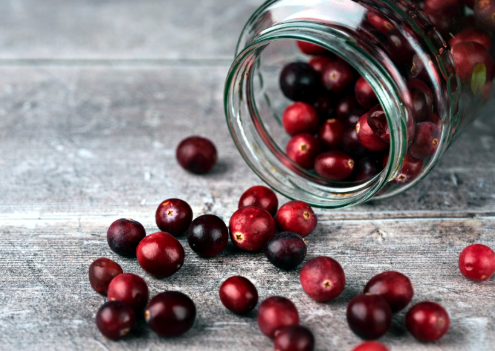Dried Cranberries vs. Fresh: What’s the Difference and Which Should You Choose?

Cranberries are known for their rich, sour and sweet taste. They are packed with antioxidants, vitamin C and other nutrients that support overall health. The best part is that they can be consumed in both fresh and dried forms. With the convenience of online grocery stores, you can easily order fresh or dried cranberries and have them delivered to your home.
While both are delicious, fresh and dried cranberries differ in nutritional profile, calorie content and more. By understanding these differences, you can make informed decisions about fresh and dried cranberries before incorporating them into your diet.
Understanding Fresh and Dried Cranberries
Fresh cranberries are generally small red berries known for their tangy flavour. They are generally used to make juices, sauces, jams, etc.
Dried cranberries are prepared by removing the moisture content from fresh cranberries. They are concentrated forms of fruit and comparatively sweeter. The drying process makes them ideal for snacking.
Difference Between Fresh and Dried Cranberries
Let us understand the difference between fresh and dried cranberries in detail.
Nutritional Value
One of the common differences between fresh and dried cranberries is their nutritional value. Fresh cranberries are high in water content and lower in calories. They are a good source of vitamin C, which supports immune health and also keeps your skin healthy.
On the other hand, dried cranberries are calorie-dense. They are also a good source of dietary fibre, which helps maintain healthy cholesterol levels.
Health Benefits
When it comes to health benefits, fresh cranberries offer various health benefits, such as healthy skin, better immune health and fighting infections. They also contain organic acids that can prevent urinary tract infections.
Dried cranberries are good for heart health because of their fibre content. However, since they are high in added sugar, consuming them in large quantities can lead to weight gain.
Storage
Dried cranberries should be stored in an airtight container in a dry or cool place to maintain their nutritional value and freshness. Refrigeration can help extend their shelf life, especially in warm or humid environments.
Fresh cranberries, on the other hand, should be refrigerated and can be frozen for long-term storage.
Availability
Fresh cranberries are typically available during the fall, especially from September to November, and can be found only in premium grocery stores during this time.
Dried cranberries, on the other hand, are available year-round and can be found in the dried fruit or snack sections of online delivery apps.
Usage
Fresh cranberries are commonly used in sauces, relishes, jams and baked goods such as muffins and pies. They can also be added to smoothies or salads for a tart flavour and nutritional boost.
Dried cranberries are a convenient snack on their own and are frequently used in salads, oatmeal, granola bars, yoghurt, baked treats, etc.
Conclusion
Cranberries, both dried and fresh, are a good source of nutrients and offer various health benefits, such as good heart health and immune health.
Fresh cranberries are generally available during the fall season; however, dried cranberries are available all year round. You can easily buy dried cranberries using a grocery store app.



